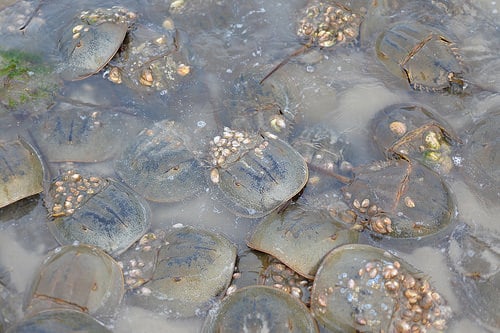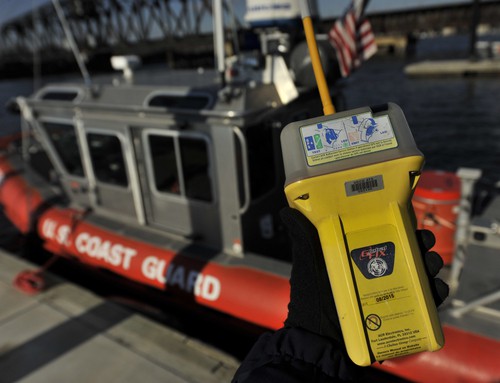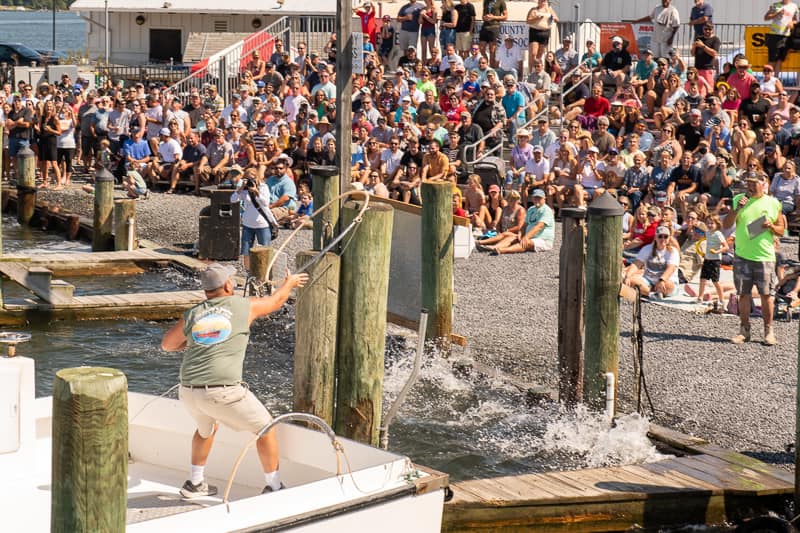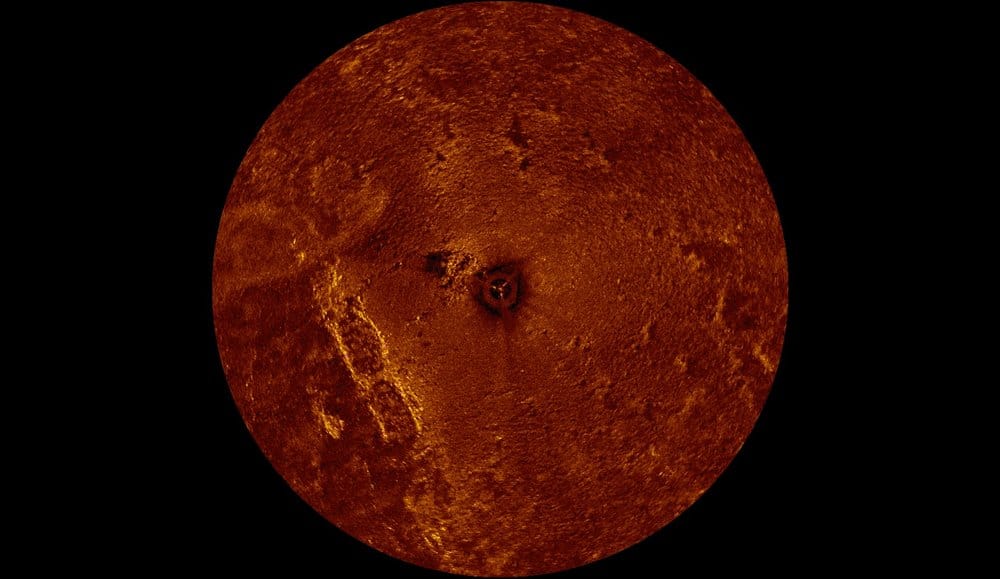It’s spawning time for horseshoe crabs, the strange-looking prehistoric creatures we find washed up on mid-Atlantic beaches. That makes it a great time to spot huge numbers of them on shore.
Over the next two full moons, May 29 and June 28, and the new moons June 13 and July 12, Maryland will see its greatest number of horseshoe crabs all year, on coastal bays and beaches.
Known as “living fossils”, horseshoe crabs have spawned on local beaches for the last 350 million years. Each crab will lay nearly 20,000 eggs, but many eggs won’t survive, thanks to predators like crustaceans, fish, and shorebirds like the red knot.
The Maryland Department of Natural Resources (DNR) says horseshoe crabs are also vulnerable to predators if they get flipped onto their backs. DNR asks anyone who sees a horseshoe crab on its back to gently flip the crab over, using two hands to lift it on its sides (not by its tail) so it can return to the water.
“The horseshoe crab is such a unique species here in Maryland,” said Maryland Department of Natural Resources biologist Steve Doctor, who conducts an annual horseshoe crab survey. “During peak egg-laying times, the horseshoe crabs are so abundant you can’t even see the sand.”
Horseshoe crabs are harmless, despite their spiky-edged shells and pointy tails.
-Meg Walburn Viviano




